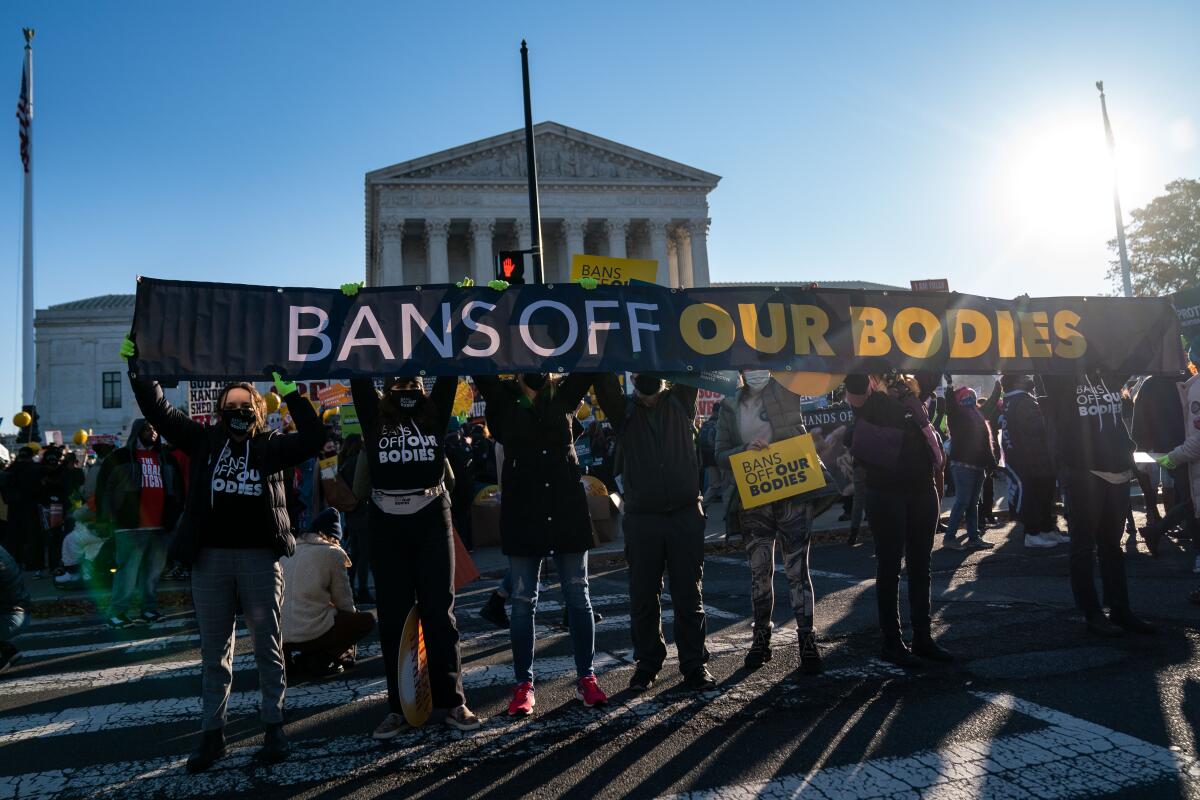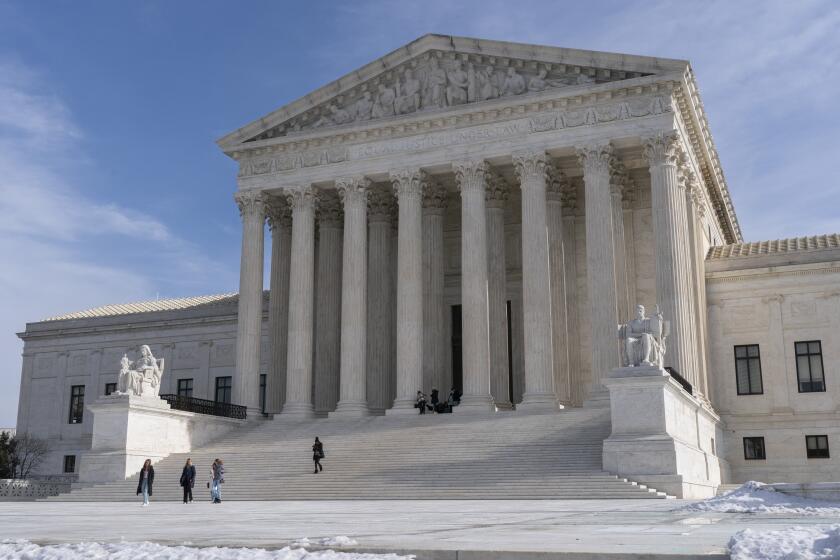Op-Ed: What we can learn from one of California’s most successful abortion providers

- Share via
For more than two decades, I researched the life of Inez Burns, one of America’s most successful abortion providers. Burns lived in California and terminated more than 50,000 pregnancies when abortion was illegal across the U.S. While the Supreme Court weighs whether to overturn Roe vs. Wade, Burns’ cautionary story underscores a basic, undeniable truth: Banning abortions will do little to stop women from having them.
Burns, who wore couture fashions and had a closetful of 500 hats, was the state’s worst-kept secret. She learned the procedure when she apprenticed in a physician’s office. Between 1911 and 1952, she performed dozens of safe, sterile and hygienic abortions every week in her two-story clinic on lower Fillmore Street in San Francisco.
The majority of Burns’ middle-class patients already had children and lacked the financial resources to feed another mouth. Her clinic was tacitly endorsed by nearly everyone up and down the state. Physicians sent their patients to her, as did lawyers and pharmacists, who referred clients and customers. Hollywood studios pointed actresses her way. Priests sent nuns to her.
The Texas ban is likely to remain in effect for the foreseeable future.
While abortion was illegal during that entire period, the medical procedure hadn’t mushroomed into the divisive political issue it was to become. (When Burns started out, abortionists routinely took out thinly veiled advertisements in newspapers promoting their services.) Burns was considered a kind of public utility, only more reliable.
In an era when women had few rights, Burns gave them the most basic. Word circulated, as it always does when your skill is specialized, in demand and illegal. Women came from around the corner and across the nation to Burns’ clinic. In my research, I talked to women who told me that whether they arrived by bus, automobile, train, ferry or plane, they’d quietly ask other women, sometimes strangers on the street, “Know where that Burns woman lives?” Every woman seemed to know, and if they didn’t, they knew someone who did.
At the time, the prevailing standard of enforcement was that abortion was a necessary evil with two mandatory components: The procedure had to be safe and it had to be discreet. As long as no one died and the service was spoken about in whispers, hundreds of abortionists maintained thriving practices in every region of the nation. Those like Burns, who knew what they were doing, continued for decades. Less-skilled practitioners often operated on the run, renting hotel rooms by the hour; many used aliases to prevent detection. Women who underwent abortions at the hands of such ill-equipped operators risked their lives, and untold numbers died.
It took 20 years for Burns to be prosecuted and sentenced to prison. By then, she was in her 60s. A young, ambitious district attorney by the name of Edmund G. “Pat” Brown, who campaigned on a local platform of “family values,” relentlessly pursued Burns’ conviction. It was a highly publicized case and helped raise Brown’s profile; not long after, he was elected attorney general and later governor of California.
But in sending Burns to prison, all that was accomplished was that authorities had shut down one of the safest and most reputable abortion clinics in America. Without Burns and other providers, pregnant women who didn’t want to carry to term had to fend for themselves. Putting Burns out of business meant women went to less-skilled practitioners. Some women attempted abortions on themselves using needles, crochet hooks, coat hangers, bleach and scores of other deadly, homespun substances. Some resorted to useless herbs. Some committed suicide for fear of being discovered pregnant or giving birth.
Abortion rights are under assault in the same court that once protected them.
If I’ve learned anything from years of researching Burns, it’s this: If a woman wants an abortion, she’ll do anything to get one.
If the Supreme Court decides to outlaw abortion, women with financial means will continue to find skilled practitioners throughout the United States willing to perform the procedure. Or they will travel to Canada, Mexico, Asia or Europe for sterile, legal abortions conducted by trained medical providers.
Poor pregnant women will also seek medical intervention, no matter what the law is. But their access to safe options will be limited. Banning abortions has always been — and will continue to be — impossible no matter the law.
Stephen G. Bloom is a professor of journalism at the University of Iowa and author of “The Audacity of Inez Burns: Dreams, Desire, Treachery & Ruin in the City of Gold.”
- Share via
Watch L.A. Times Today at 7 p.m. on Spectrum News 1 on Channel 1 or live stream on the Spectrum News App. Palos Verdes Peninsula and Orange County viewers can watch on Cox Systems on channel 99.
More to Read
A cure for the common opinion
Get thought-provoking perspectives with our weekly newsletter.
You may occasionally receive promotional content from the Los Angeles Times.













